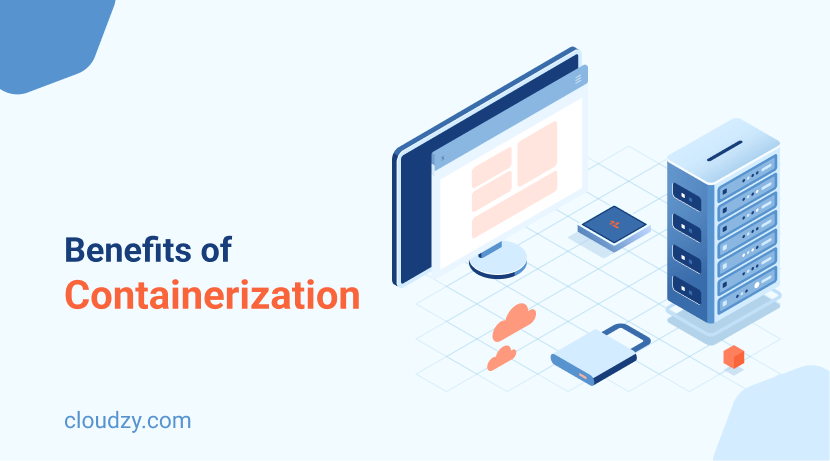There’s a very classic issue that developers face in every project. Have you ever tested an application on your system and thought, “oh, it’s working?” Then try it on another machine and see it fail? Yes, I’m talking about the “it works on my machine” syndrome. This inconsistency is a huge barrier to effective software development. Although it can have many underlying reasons, one of its most important causes is the difference in environments across development, testing, and production stages.
There’s a traditional answer to this classic issue: using physical servers or virtual machines (VMs) to deploy applications. However, this solution is resource-intensive and inflexible. Because VMs encapsulate an entire operating system along with the application, they are bulky and slow to start. There has to be a more efficient way. And thankfully, there is. Containerization is a technology that is designed to encapsulate an application and its dependencies into a container that runs on a single operating system kernel. This approach is a great solution to the environmental inconsistency problem. It’s like packaging an application with all its necessities into a box that could be opened and run anywhere, from a developer’s laptop to a production server. Brilliant, isn’t it?
I hope this short introduction to containerization has made you curious to learn more about it. If so, follow along as we walk into details and explore all the benefits of containerization.
Understanding Containerization in Simple Terms
Imagine you have a huge box of Legos. Each Lego piece represents a tiny part of a computer program, like a puzzle piece. Now, to make sure you can play with your Legos anywhere, at your friend’s house or at the park, you need a special box that can carry your Legos without mixing them up or losing them. This special box is like a container in the world of computers.
Containerization is a clever way of packing up computer programs so they can run smoothly on any computer, just like your Lego box lets you build your Lego masterpiece anywhere. Just as each Lego piece has its special spot in the box, in containerization, each part of a computer program gets its own little space. This space has everything the program needs to work on: the rules of the game, how to build the blocks, and even how to clean up after playtime.
When adults talk about containerization, they mean putting programs in these special boxes so they can easily move them from one computer to another, like carrying your Lego box from home to the park. This is super handy because it means the program will work just the same at the park as it does at home. You don’t need to worry if the park has different kinds of toys or rules; your Lego box has everything you need.
So, containerization is like having a magical Lego box for computer programs. It helps everyone share and play with their programs anywhere without any trouble. Just like you wouldn’t want to lose a single piece of your Lego set, containerization makes sure every part of the program is safe and sound wherever it goes.

5 Benefits of Containerization
The benefits of containerization help it to stand out as a transformative technology in software development and deployment. It has lots of benefits that each addresses a challenge that developers and IT professionals face. Let’s explore the containerization advantages and see how it has shaped modern application development.
1. Enhanced Portability Across Environments
One of the fundamental benefits of containerization is that it can guarantee application consistency and functionality across different computing environments. Whether you’re moving from a local development machine to a test environment or from a staging area to production, with containerization you can be sure that your application runs exactly as intended. The reason behind this guarantee is that each container includes not just the application but also its runtime, libraries, and dependencies. What could be a better answer to the “it works on my machine” problem? This uniformity eliminates this annoying problem and makes the deployment process smoother.
2. Improved Efficiency and Resource Utilization
Containers are more lightweight than traditional virtual machines. The reason behind this is that they share the host system’s kernel and do not require an entire OS to be packaged with each application. So, they require fewer system resources, and the hardware is used more efficiently. Containers can also be started and stopped in seconds. This means rapid scalability in response to fluctuating demand, which can save a lot of costs.
3. Faster Deployment Cycles
The lightweight nature of containers doesn’t just improve resource utilization. It also facilitates deployment cycles. With containers, applications can be packaged, shipped, and deployed rapidly. This is a more effective way for organizations to adopt agile development practices. This speed also facilitates CI/CD practices and allows teams to bring features, fixes, and updates to the market faster than ever.
4. Simplified Management and Scalability
Container orchestration tools, such as Kubernetes and Docker Swarm, can simplify container management. They enable features like automated deployment, scaling, and management of containerized applications. With the help of these tools, scaling applications up or down and managing application health become easier.
5. Increased Development Productivity and Collaboration
In the list of benefits of containerization, the fact that it eliminates environmental inconsistencies and facilitates deployment processes is an important one. This way, it can create a more collaborative and productive development environment. Developers can focus on writing code rather than worrying about deployment issues, testers can easily replicate environments to find and fix bugs, and IT professionals can deploy and manage applications more efficiently. This level of efficiency is the direct result of using containerization, and every team member benefits from it.
There are lots of great techniques to optimize your workflow with Docker containers. One of them is learning how to list docker containers. This technique can help you manage containers and troubleshoot your issues. If you’re curious to learn more, I encourage you to read ou other blog on listing Docker containers.

How a Good Cloud VPS Provider Enhances Containerization
Your efforts in containerization can be topped with a great cloud VPS provider that offers scalability, reliability, and high performance. Here’s how Cloudzy steps up to support your containerization journey:
-
Ease of Deployment
Cloudzy simplifies the process of deploying your containerized applications, making it as straightforward as playing with building blocks. Our user-friendly platform allows for quick and efficient deployments.
-
Scalability
Your applications can grow seamlessly with Cloudzy. Our VPS plans are tailored to scale with your needs, offering the flexibility to expand or contract resources as your application demands change.
-
High Availability
With a 99.95% uptime guarantee, Cloudzy makes sure that your applications are always up and running. This level of reliability means that your services are continuously available to your users.
-
24/7 Support
Imagine having a question or facing a challenge at any hour. Cloudzy’s around-the-clock support acts as a functional helper. This way, you can be sure that any issues you encounter are promptly addressed.
-
Cost-Effectiveness
Cloudzy delivers all these benefits at an affordable price with a PAYG model that allows you to manage your projects based on your budget.
Want a high-performance Cloud VPS? Get yours today and only pay for what you use with Cloudzy!
Get Started HereConclusion
In this blog post, we tried to understand containerization without overwhelming technicalities. We also talked about the benefits of containerization like portability, efficiency, and productivity. If you think containerization is the answer to your deployment issues and you want to combine its power with a cloud VPS, consider Cloudzy’s services as a platform for hosting your applications.
FAQ
What are the disadvantages and advantages of containerization?
Containerization offers streamlined development, ensures consistency across environments, and improves scalability and portability. However, it can introduce complexity in management and requires careful security considerations.
How do the advantages of containers improve application deployment and management?
The benefits of containers include faster deployment times, improved consistency across development, testing, and production environments, easier scalability, and better resource utilization. These containerization benefits lead to more efficient application management and reduced overhead.




